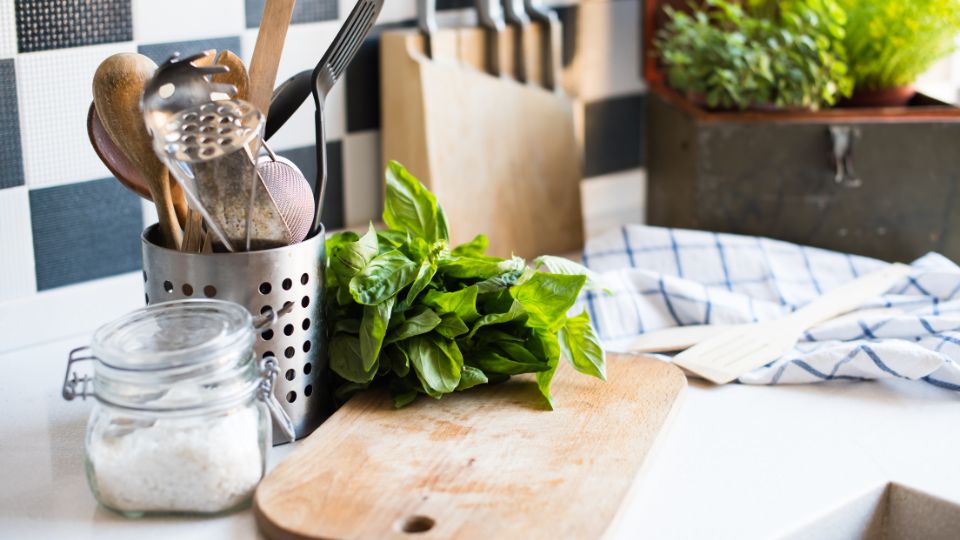Cooking with vision loss can seem daunting, but with some simple modifications you can continue to make healthy and delicious meals for yourself and loved ones.
We recently spoke with Debra from The Blind Kitchen about some of her best tips and tricks for cooking. Food is Debra’s love language—it’s the way she most enjoys expressing affection for family and friends. When vision loss threatened her ability to safely prepare meals, she was deeply saddened. Debra wondered, “How could I independently read recipes, shop for groceries, and keep a clean, organized kitchen if I couldn’t see?”
Debra has made it her mission to teach other adults who don’t have good eyesight to learn new approaches for operating in their kitchens safely, efficiently, and confidently. These are three of Debra’s favorite tips to making cooking more successful.
1. Use a Work Tray
Remember those cafeteria trays from grade school? These workhorses are indestructible and will make cooking with sight loss much easier. In fact, Debra recommends that you don’t to ANYTHING unless it’s on a tray.
You’ll want to invest in a few trays, and choose the color to contrast with your work surface. If your kitchen counters are white, choose a dark-colored tray. And if you have black countertops, then choose a white tray. If you have some useable vision, keeping your workspace high-contrast will help avoid messes. Another pro-tip from Debra: put bump dots on the bottom to keep the tray from moving around.
When you’re pouring liquid, be sure to do so on a tray. Any spills will be contained, making cleanup much easier. You can also put a cutting board inside the tray. If bits slide off the cutting board, they will be contained by the tray.
2. Get out all your ingredients and put them on the work tray before you start a recipe.
Locating all of your ingredients and setting them up nearby your work surface will help you to get through a recipe more efficiently. Debra suggests putting all of your ingredients out on a work tray, and then put them away as you go. At the end of your recipe, if there’s still an ingredient on the tray you will know you missed something!
Staying organized is key to cooking with sight loss. Be sure to check out our videos about how to keep your pantry organized and our ultimate guide to keep track of everything in your fridge and freezer.
You can pick up a WayAround Kitchen Starter Pack to get started labeling all the places in your kitchen.
3. Lay tall, thin bottles on their sides so you don’t knock them over.
Do you have a collection of oils, vinegars, or other ingredients that come in tall, thin bottles? Those are not vision-loss-friendly, because it’s easy to knock them over. Debra’s solution? Lay them on their sides (on a work tray, of course) so that you avoid bumping them.
If you want to learn how to be more confident in the kitchen even with blindness or low vision, head on over to The Blind Kitchen. Debra offers classes as well as low-vision-friendly kitchen tools.


Line your work tray with a flexible cutting board. Want to clean up? Hold the outside edges higher than the Center and tild away from you into the sink or trash can. The higher the sides the smaller the pour area.
That’s a great tip – thanks for sharing!
Maybe I’m just not looking in the right place, but I cannot find any suggestions for the way Clips. And I cannot think of any uses for the way clips except for in a garden, which I don’t have one of. Any suggestions you have for them in the kitchen would be very interesting. Right now I only use the stickers, magnets and oval hold buttons.
The WayClips are great for paper or thin cardboard – cereal boxes, granola bar boxes, etc. You can also use a hair elastic and loop it around the bottom tab, then you can attach the WayClip to a milk jug or anything with a handle.